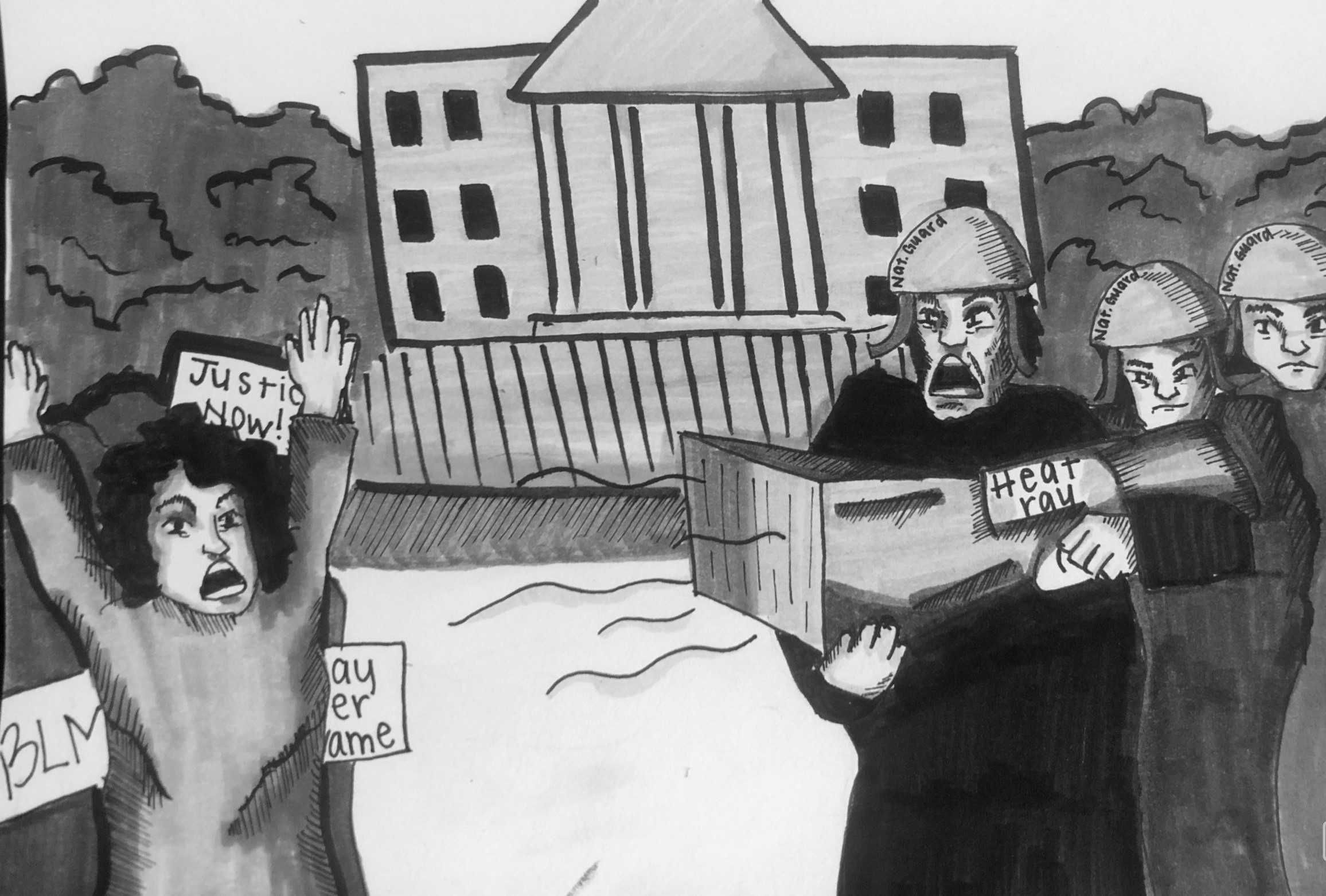In early June, less than 10 blocks from campus, President Donald Trump held a photo shoot in front of St. John’s Church in the midst of protests over Black lives and police shootings. Later reports indicated that during this political stunt, the Department of Defense considered deploying “heat rays” and sound cannons against protesters who stood between the White House and church.
When I first heard this news, I thought it had to be a joke. Beside the fact the government contemplated violence against peaceful protesters, even thinking about using a “heat ray” – formally known as an Active Denial System – made the event seem straight out of science fiction. But this weapon, like the government’s inquiry, was real and is a jarring exemplar of over-policing at relatively peaceful protests around the country. Not only that, but it’s an indication of the racism prevalent in the response to demonstrations pushing for social justice. Protesters, many of whom were students and recent graduates, shouldn’t worry about facing pain or death at the hands of their own government at a demonstration.

Hannah Thacker | Opinions Editor
The issue of over-policing isn’t unique to the District. Police across the country have overmilitarized their forces and brought in additional officers even though it was never necessary. In small towns and cities, routine police matters like drug arrests are often addressed with far more firepower than needed – literally. Protesters pushing for racial justice nationwide have faced down military-style tanks and weapons used allegedly to keep the peace. In the nation’s capital, protesters saw more than four different types of law enforcement, from the Metropolitan Police Department to the National Guard. Weapons developers originally designed the aforementioned heat ray for use on the battlefield in Iraq, but ethical concerns indefinitely delayed deployment. What message does it send that the president felt that the walk between the White House and St. John’s Church merited the use of a weapon deemed unethical for use against the country’s enemies?
The excessive force hundreds of thousands of Americans have encountered pose a serious threat not only to those peacefully protesting but to everyone who lives in cities across the United States who encounter the police in mundane contexts. The job of police is to protect and serve its residents, not to attack them and commit violent acts against them in the name of maintaining civility.
And, as with every issue, race plays a role in who faces the brunt of police militarization. At a “Unite the Right” rally in Charlottesville, Virginia, in 2017, hundreds of White supremacists took to the streets to chant incendiary slogans until the rally devolved into violence between those marching and those opposing them. During this whole event, the police did not step in until things got violent between the two groups. Initially, this rally was devoid of violence, and the police allowed it to continue as such. That’s a stark contrast to what has happened at Black Lives Matter protests across the country. There’s no question that the treatment of BLM protesters is far worse than that of White supremacist marchers. While those in Charlottesville chanted and marched, police never once saw them as a threat to the peace that they needed to forcibly remove them from the streets as they have done at recent BLM protests.
Many students are politically active and were likely to be at various protests, not only in D.C., but in their home cities nationwide. The prospect of any student facing assault by police officers simply for protesting should scare everyone, no matter your political views. It should be common sense that the use of military-grade weapons against civilians, especially those fighting for Black lives, is tantamount to fascist and racist behavior.
It doesn’t matter if you stand with the BLM movement or not – excessive police force should not be used on protesters. Heat rays and sound cannons should only exist in the pages of comic books and plots of movies, not opposite demonstrators at the White House.
Hannah Thacker, a junior majoring in political communication, is the opinions editor.

